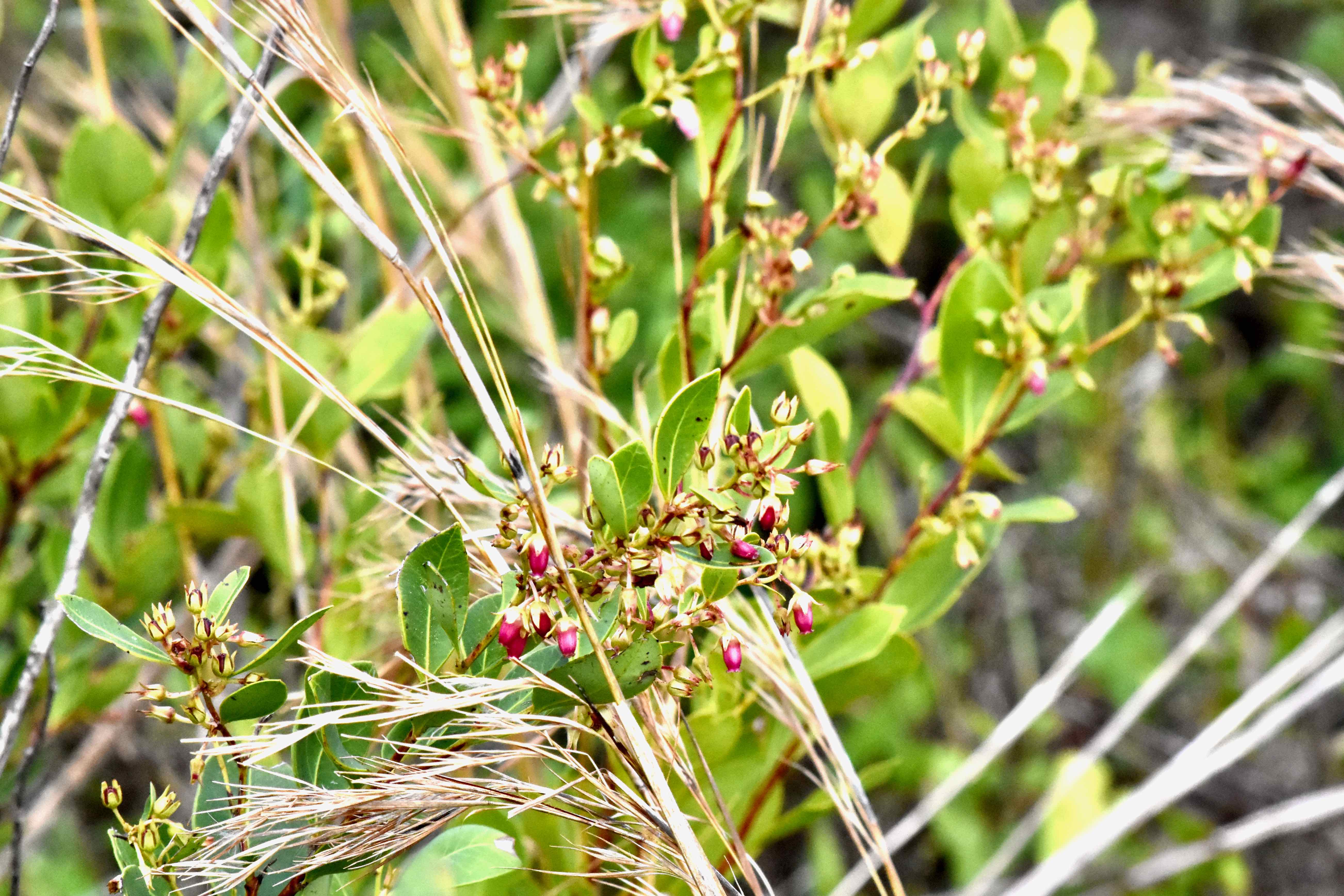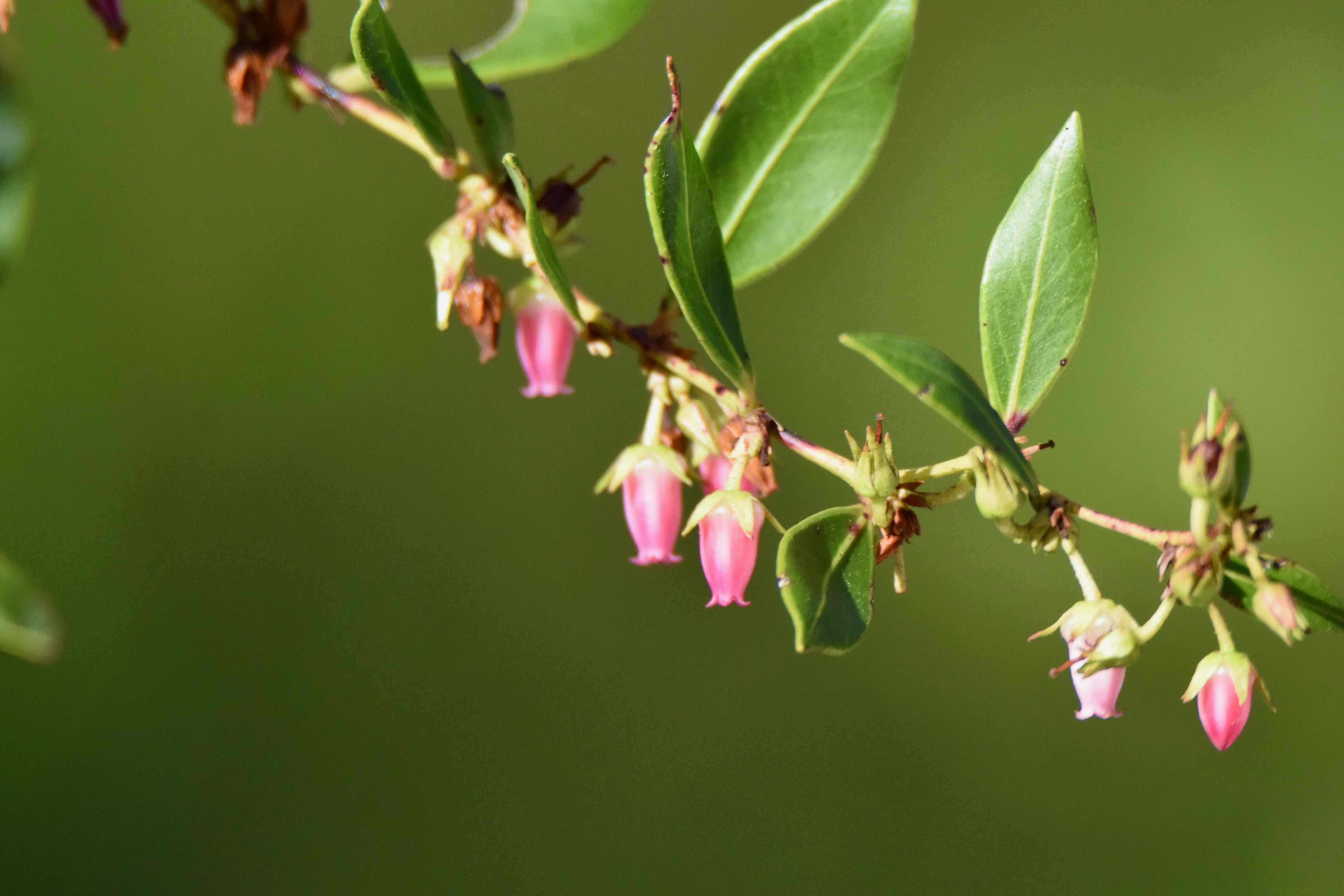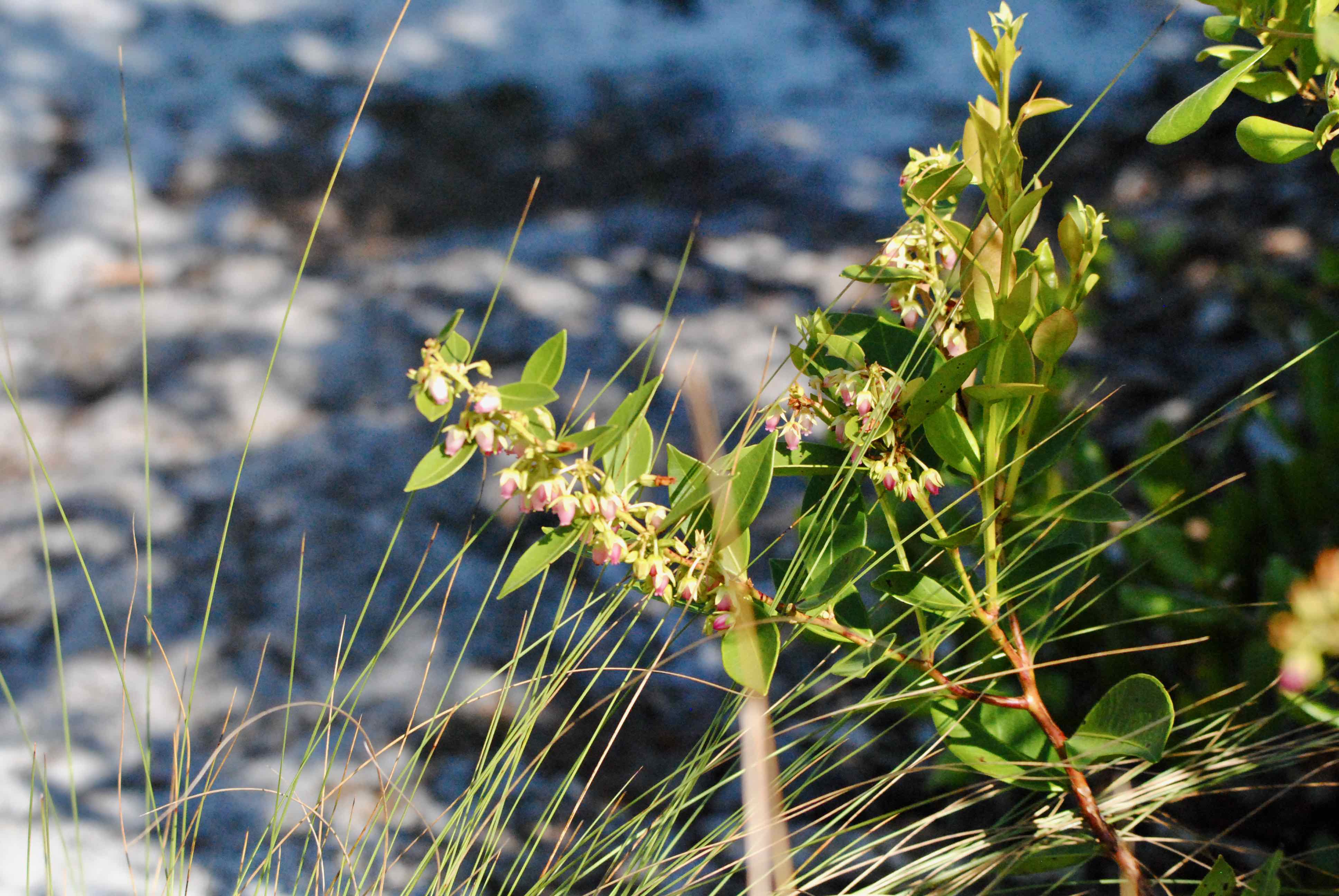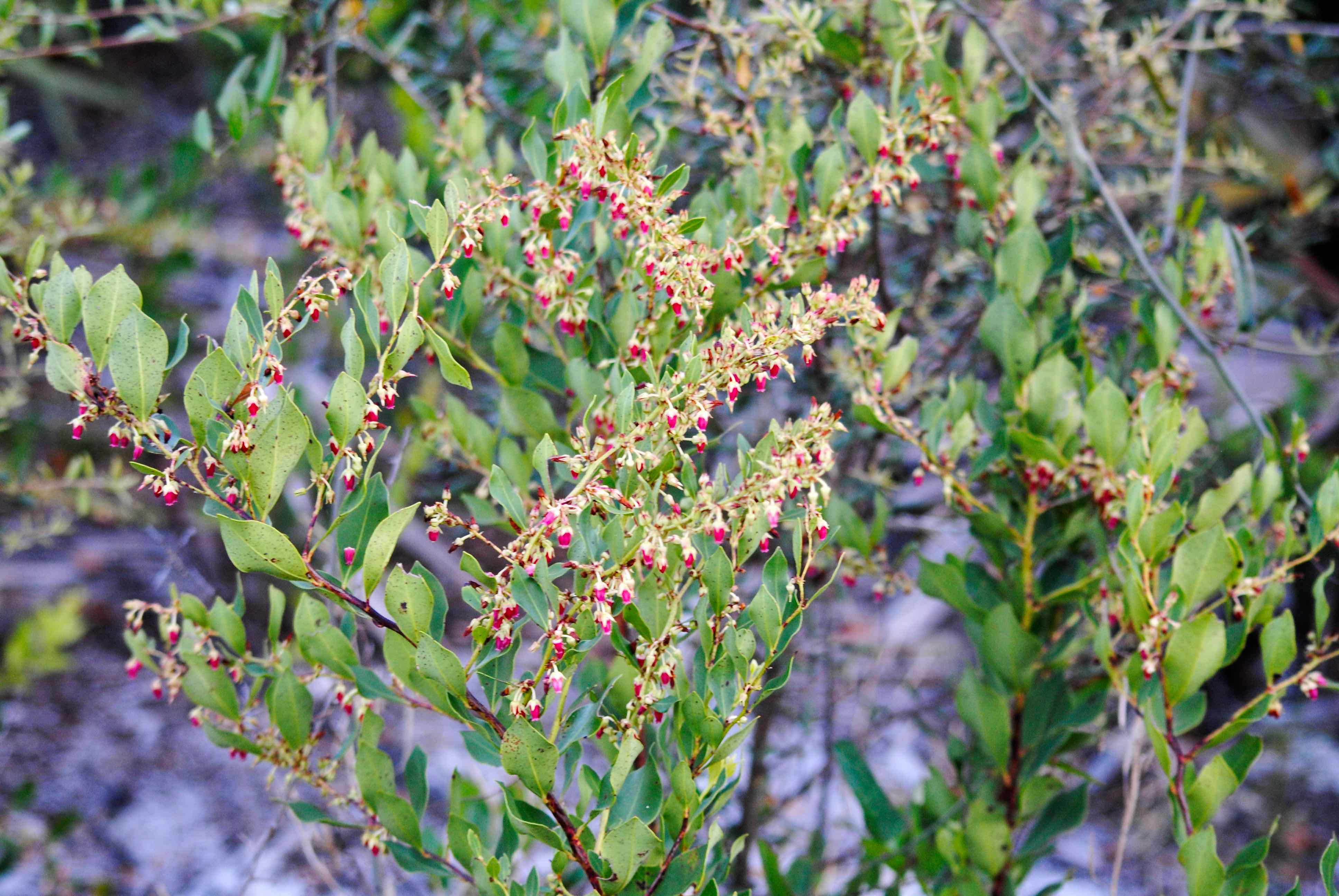
Fetterbush, photographed at Lantana Scrub Natural Area, Lantana, Palm Beach County, in March 2014.
Our first impression of fetterbush, Lyonia lucida: What a strange name. But it comes with a logical explanation. Its sprawling habit and the large, dense colonies that it forms can "fetter," or hinder, both humans and animals trying to move through it.
Similar logic to its similarly named cousin, coastalplain staggerbush, L. fruticosa. The scientific name of both plants honors the 18th and 19th century Scottish gardener John Lyon. Lucida refers to fetterbush's shiny leafs. Both common names provide a vivid idea of exactly how tough Florida's landscape can be.
The plant is a Florida native, and ranges as far north as Virginia and as west as Louisiana. Cuba is also part of its native range. Fetterbush is found in pinelands and swampy areas throughout most of the state. It's native to 62 of Florida's 67 counties. Fetterbush is a harbinger of spring, blooming in late winter and spring here in South Florida. The blooms are fragrant, pale pink to pinkish red to red in color, urn-shaped and hang upside down. They appear in large numbers along the branches and can live for several weeks. The fruit they produce are brown capsules that opens up as they mature.
Fetterbush is a shrub with a multistemmed trunk and grows to six to eight feet tall, and just as wide. It has an arching shape, or habit. The leaves are oval-shaped, simple and arranged alternately along the stem. They have a prominent vein running along the outter edge; they are leathery in texture and smooth to the touch. Young leaves have a copper color to them but turn dark, shiny green as they age.
Fetterbush can develop extensive networks of rhizomes, or underground stems, that help spread the plant and enables it to establish extensive colonies.
Favorite habitats include pinelands, savannas, and swamps; it prefers moist places but will take to drier soils. It likes full sun to partial shade, tolerates drought but less so when it grows in dry soil. It will also grow in extremely acidic soils.
It plays important roles in the life of the Florida black bear, providing both food and shelter. It's also important to white-tailed deer, bobcat, marsh rabbit, eastern gray squirrel, alligator, pine barrens tree frog, eastern diamondback rattlesnake and the red cocaded woodpecker. Fire will top kill fetterbush, but it can resprout from its rhizomes and from its roots.
The plant isn't poisonous, but the sap can be a skin irritant. Fun fact: Seminoles used fetterbush wood to make bowls for their tobacco pipes. Fetterbush is used in landscaping as an accent plant.
Other common names include shiny lyonia, shinyleaf, fetterbush lyonia, hurrahbush and staggerbush (not to be confused with its cousin, mentioned above). It is a member of Ericaceae, the heath family.
Photo Gallery — Click on photo for larger image
U.S. Department of Agriculture Distribution Maps


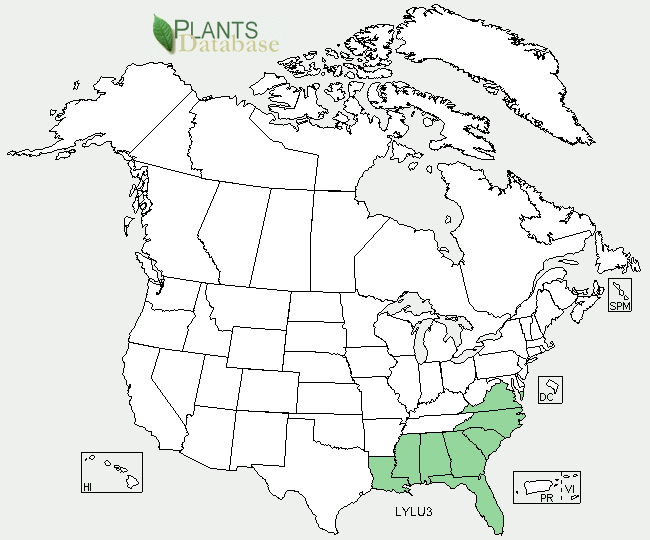
Links for Fetterbush

